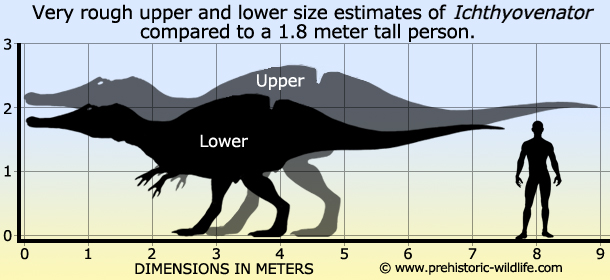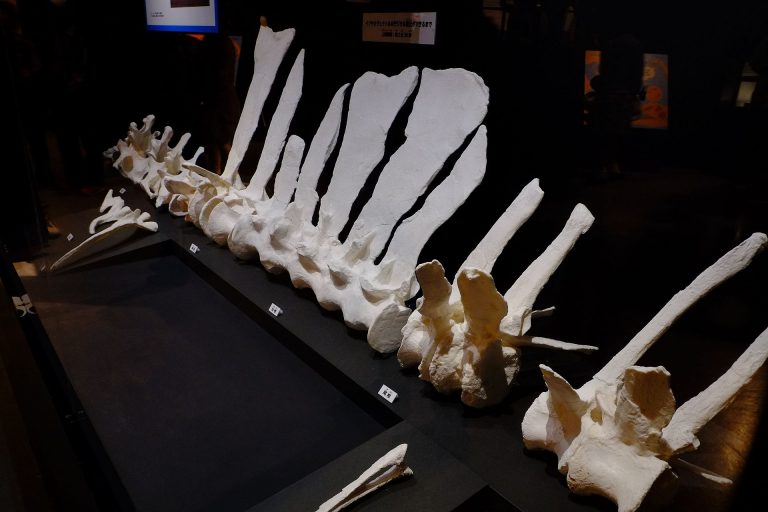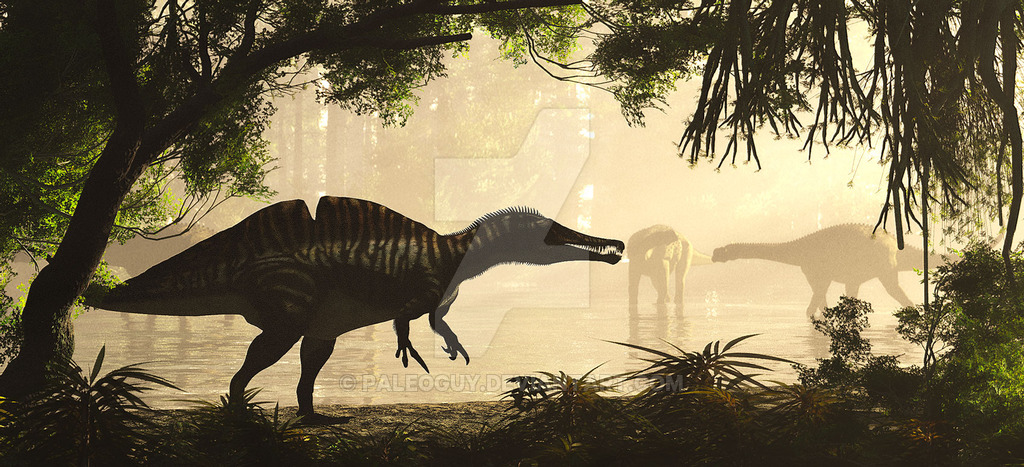Ichthyovenator
Ichthyovenator is a spinosaurid theropod dinosaur from the Early Cretaceous of Laos.

Ichthyovenator is known from the type species Ichthyovenator laosensis. The species was named and described in 2012 by Ronan Allain, Tiengkham Xeisanavong, Philippe Richir and Bounsou Khentavong. The generic name is derived from Greek ἰχθύς (ichthys), “fish”, and Latin venator, “hunter”, in reference to a piscivorous lifestyle. The specific name refers to the provenance from Laos.

Unlike other spinosaurids, Ichthyovenator has at least two separate sails. The preserved axial column, over a metre long, shows a very high spine on the penultimate, twelfth, back vertebra, representing a crest extending from the back, and a lower rounded sail extending from the sacral vertebrae of the hip, with its highest point above the third and fourth sacrals. The 546 millimetre long spine of the twelfth dorsal vertebra widens towards the top, giving it a trapezoidal shape, whereas the spines of other spinosaurids are roughly rectangular. Its front corner forms a three centimetre long narrow process, pointing upwards. The spine of the thirteenth dorsal vertebra has only been partly preserved, its upper and lower ends having broken off. From its general shape the describers inferred however, that it was about as long as the preceding spine. This would imply that the back edge of the front sail would form a rectangular corner, as the spine of the first sacral vertebra is with about twenty-one centimetres much lower, creating a sudden hiatus. The spine of the second sacral vertebra steeply curves upwards again, joining the forty-eight centimetres high broad fan-shaped spines of the third and fourth sacrals. The spine of the fifth sacral gradually descends. The sacral spines are not fused, nor have any extensive contacts.
Ichthyovenator was by its describers assigned to the Spinosauridae and more precisely to the Baryonychinae, in a basal position, as the sister species of a clade formed by Baryonyx and Suchomimus.









